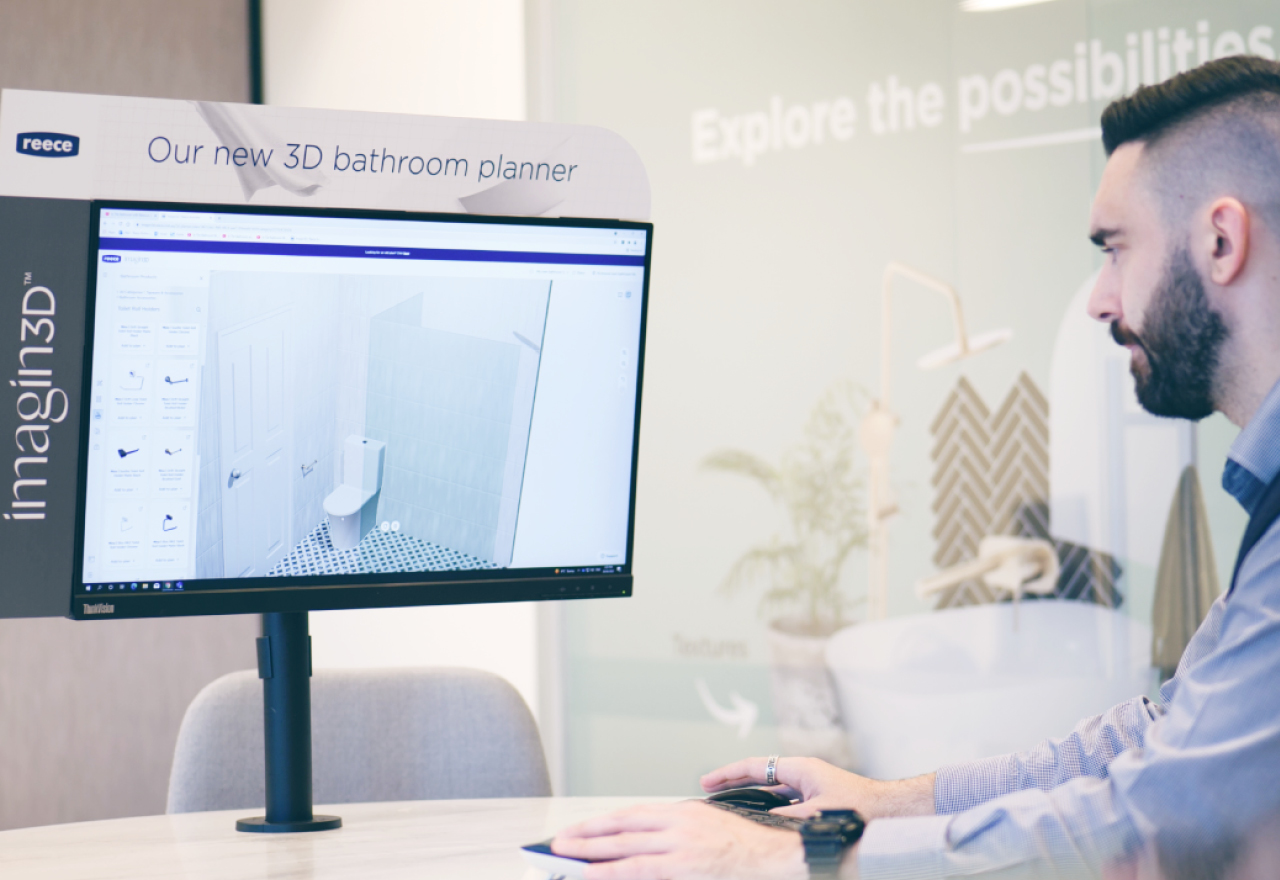Looking Glass 2023
Making the metaverse
Exploring the frontiers of digital interaction
There’s no denying the hype surrounding the metaverse right now — or that the hype is driving real business investments. Meta alone has invested more than $10 billion in the metaverse over the past year, and although that has been treated with skepticism by some investors, many other companies are following suit.
Some investments in the metaverse will prove useful. Yet in our view the metaverse is often a distraction from a larger shift: an evolving new frontier of interaction. This evolution incorporates a multitude of other fast-advancing technologies including virtual, augmented and extended reality (VR / AR / XR) as well as voice, gesture and facial recognition. What’s more, these technologies are already ‘here’ and likely to be immediately relevant to businesses in a way the metaverse — at least for now — isn’t.
There’s clearly a degree of brand ‘FOMO’ going on as marketers rush to experiment with things like NFTs or concerts in virtual worlds. This may be a result of so many missing out on the social media wave, or the metaverse being lumped into the Web3 craze. In reality, metaverse technology stands apart. The metaverse could well succeed without cryptocurrencies, distributed identity or the other trappings of Web3 tech.
Signals include:
The affordability and ergonomics of hardware bringing evolving forms of interaction further into the mainstream. Quest Pro’s full-color AR and deliberately open peripheral vision headset is one example. Rumors also continue about an Apple headset, though no official announcement has been forthcoming. Apple has a history of making sure content has reached a certain critical mass before announcing hardware to access it.
More cynicism around the metaverse itself. Meta, the most prominent advocate of the space, has been urged by shareholders to cut staff and slash spending on the metaverse. And while many research firms trumpet the metaverse’s potential for growth, not all are in agreement. Canalys has predicted most metaverse efforts will have met their demise by 2025.
’Digital twins’ giving rise to the industrial metaverse. For all the focus on the ‘retail’ metaverse where brands interact directly with consumers, it’s actually the enterprise version that may gain traction first. Organizations like GE Formula One and Ford Motor are employing digital twins — virtual models of a process, product or service that allows both simulation and data analysis — to monitor, optimize and experiment with complex creations. Digital twins increasingly incorporate AR, VR and AI to further narrow the gap between physical assets and their virtual counterparts. McKinsey sees a network of virtual twins laying the foundations for a massive industrial metaverse that transforms development processes and paves the way for better decision-making, and companies such as NVIDIA and Siemens are already stepping up to provide the infrastructure.
Advances in haptics allow users to ‘feel’ virtual interactions. XR can be incredibly immersive audio-visually, but the illusion is broken as soon as you try to touch something. Until recently, all XR input has relied on handheld controllers or touchscreens. As hand tracking and gesture recognition replaces buttons and joysticks, people will increasingly want to reach out and touch virtual objects. High resolution haptic gloves — as well as watches and bodysuits — could take the experience to the next level.
Advances in gaming technology deliver immersive, high-fidelity experiences. There's a lot of progress in the games industry that is likely foundational for a consumer-oriented metaverse. Foundational tech includes photorealistic graphics, the ability to have large crowds of player avatars in the same virtual world, and easy to use tools allowing more people to build virtual worlds.
The opportunities
Developing digital twins to test, learn, and enhance certainty. In environments like factories or with machines in the field, there’s significant potential to use 3D visualization and live data to better understand what’s happening to pieces of equipment you can’t actually see and identify maintenance problems before they result in failures. Digital twins also enable enterprises to test or prototype with a higher degree of precision before building or deploying a product in earnest, and provide physically dispersed teams a new platform for collaboration.
The opportunity to find and connect with audiences in new ways. The metaverse and other emerging technologies create room for marketing or brand exposure to customer groups that your business might otherwise struggle to reach. They can be applied to make interactions more accessible, multimodal and seamless, with far fewer restrictions around real estate or location, giving the notion of ‘meeting customers where they are’ a whole new meaning. The possibilities range from billboards in the metaverse to immersive AR or VR experiences that build anticipation for an event or product.
Making training more effective, and impactful. By employing virtual or augmented reality, manufacturers can demonstrate and teach skills such as material finishing with higher exactitude, reducing the likelihood of errors later as well as the amount of material waste generated in a given process. Such technologies also provide a means to prepare staff for high-pressure events like Black Friday in the US, or to accurately reproduce and rehearse for potential emergency situations to build readiness.
Empowering customers to use products more effectively by tapping into new means of interaction to ‘show’ rather than tell, and bring instruction manuals or directions for assembly to life. As well as potentially reducing support costs and return rates, this has the potential to contribute to customer satisfaction and ultimately loyalty, as more people use products safely and in the way they were intended.


What we’ve seen
Reece partnered with Thoughtworks for their integrated tech, design and digital innovation experience, to develop a modern 3D bathroom planner tool. Imagin3D lets customers lay out a floor plan, choose products, and bring their designs to life before committing to a purchase. Reece's showroom consultants and independent contractors also use the tool to close renovation contracts and proposals.
While Imagin3D doesn’t use XR — it can be accessed using an everyday web browser — it is an excellent example of how to engage consumers in new ways with an experience that goes way beyond a flat 2D website. In the first three months, the tool helped over 30,000 customers bring their dream bathrooms to life. Reece will continue to meet their customers where they are, with proactive testing and feedback to inform how the visualization tool can solve their customers’ challenges in other parts of the home.
Trends to watch
Adopt
Digital twin: Digital models of physical processes, assets or services make it possible to see what’s happening to pieces of equipment or processes in real time, and even simulate what would happen if circumstances or configuration were changed. As just one example, GE builds digital twins for its jet engines, taking real-time data from dozens of sensors in each. Using machine learning, data is extrapolated from dozens of real sensors into hundreds of virtual sensors and used to improve reliability and perform preventative maintenance.
Analyze
AI-generated media: It’s become much easier to generate lifelike interactions using AI and image processing technologies, for better and for worse. This could be used for things as simple as short advertisements on video streaming services, to creating complex fakes that spread disinformation. AI-generated art has become fashionable, unnerving some human artists in the process, though it’s unfortunately often associated with the NFT schemes that sell access to it.
Anticipate
Metaverse interoperability: Meta founder Mark Zuckerberg has claimed to value the ability for metaverse implementations to work with each other. In practice, we are unconvinced companies like Meta will allow users to gain access to their content without subscribing to their services. So far, certain metaverse implementations, such as Horizon Worlds, only function on the vendor’s hardware. But there are initiatives such as OpenXR — backed by Qualcomm, Lenovo, and Microsoft — that could eventually mean XR applications work easily across devices. Open standards for key capabilities like gesture tracking, digital twins, haptics and identity could have positive implications for adoption.
Trends to watch: the ones we're seeing now

- Connected homes
- Digital twin
- Enterprise XR
- Natural language processing
- Smart systems and ecosystems

- AI-generated media
- AI, IoT and XR combined solutions
- Alternative currencies
- Augmented reality
- Autonomous robots
- Consumer XR
- Facial recognition
- Spacial audio
- Touchless interactions

- AI and mixed reality collaboration
- Addictive tech
- Gesture recognition
- Remote rendering
- Ubiquitous connectivity
Advice for adopters
In the rush to the metaverse, don’t overlook other evolving interactions. The true extent of business relevance and consumer appetite for the metaverse has yet to be fully grasped. Yet it’s already possible to apply technologies like XR to create new interfaces, channels of communication and immersive experiences for customers or employees, often with direct near-term benefits in terms of brand engagement or productivity.
That said, watch the development of the metaverse closely and look for advancements, even possible investments, that might benefit your business. There may not be a clear business case to participate in Horizon Worlds, but research there will almost certainly lead to XR advances such as digital twins that could prove invaluable in an industrial setting.
Be prepared to go where your customers are. Pioneering brands constantly adapt, meeting their digital native customers through whichever app or experience is most relevant. If customers begin to flock to new metaverse platforms or adopt AR on a significant scale, enterprises should be ready to be there.
Remember there will be many metaverses, at least at first, despite the inclination of vendors to pitch theirs as the only one that matters. Companies that can afford to spread their bets among more than one promising platform for digital experiences should certainly do so where there’s a likely business case.
Think carefully about how you want your company to be perceived through emerging interaction technologies. For example, if you’re implementing a voice bot, is it authoritative or sympathetic? If you’re building a 3D experience, does it convey your brand values? Almost every company puts significant effort into shaping how their physical space ‘feels’ to their customers and invests heavily in ensuring this space offers a quality experience. A similar process and resources should accompany the creation of virtual spaces.
Don’t skimp on interaction tech. Things like voice interfaces and gesture recognition have advanced significantly and have clear potential to improve customer relationships, but consumer expectations have evolved in tandem. Any solutions that don’t support high-quality, near-human and near-instantaneous interactions — with great visuals to match — can do more harm than good to perceptions of your brand.
Have an interaction talent development strategy. New forms of interaction will require skills to match that may not currently exist in your team. Companies that decide to participate in a metaverse, for example, will either need to teach existing developers about metaverse technology, or hire people from the gaming industry who have designed and built virtual worlds and train them in enterprise tech. In almost every scenario, exploring new interactions will require an organizational learning curve.
Without a functioning crystal ball, it’s impossible to predict the future of the metaverse. What we can do is try to understand where the metaverse is today, the different directions that it could go, and the opportunities that exist for early adopters.
















